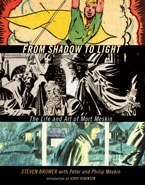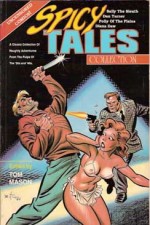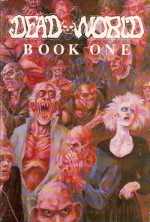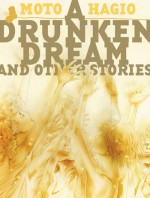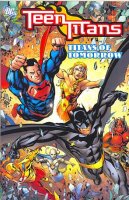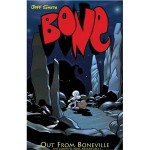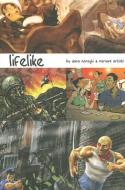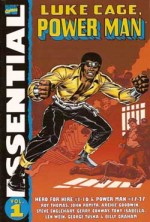
By Archie Goodwin, Steve Englehart, George Tuska, Billy Graham & others (Marvel)
ISBN: 978-0-7851-1685-1
As a sickly pale kid growing up in a hugely white area of the Home Counties in the 1960s and 1970s, I got almost all my early experience of black people from television and films (for which I’m most profoundly sorry ) – and, of course, comics – for which I’m not.
Blithely unaware of the struggle for equality in my formative years, the incredible consciousness-raising explosion of Black Power after the 1968 Olympic Games rather politicised me, and even though some comics companies had by this time made tentative efforts to address what were national and socio-political iniquities, issues of race and ethnicity took a long time to filter through to the still-impressionable young minds avidly absorbing knowledge and attitudes via four colour pages that couldn’t even approximate the skin tones of African-Americans.
As with television, breakthroughs were small, incremental and too often reduced to a cold-war of daringly liberal “firsts.†Excluding a few characters in Jungle comic-books of the 1940s and 1950, Marvel clearly led the field with a black member of Sgt. Fury’s Howling Commandos team (the historically impossible Gabe Jones who debuted in #1, May 1963, and was accidentally re-coloured Caucasian at the printers, who clearly didn’t realise his ethnicity), as well as the first negro superheroes Black Panther in Fantastic Four #52 (July 1966), and the Falcon in Captain America #117 (September 1969).
The honour of America’s first Black hero to star in his own title came in a little remembered or regarded title from Dell Comics. Lobo was a gunslinger/vigilante in the old west who sought out injustice just like any cowboy hero would, first appearing in December 1965, created by artist Tony Tallarico and scripter D.J. Arneson.
Arguably a greater breakthrough was Joe Robertson, City Editor of the Daily Bugle, an erudite, brave and magnificently ordinary mortal distinguished by his sterling character, not a costume or skin tone and who first appeared in Amazing Spider-Man # 51 (August 1967), proving in every panel that the world wouldn’t end if black folk and white folk worked and ate together…
This big change slowly grew out of raised social awareness during a terrible time in American history – although Britain had nothing to be smug about either. Race riots had started early in the Sixties here and left simmering scars that only comedians and openly racist politicians dared to talk about. Shows such “Till Death Us Do Part†and “Love Thy Neighbour†made subtly telling headway but still raise a shudder when I see clips today…
Slowly more positive ethnic characters were let in, with DC finally getting a Black hero in John Stewart (Green Lantern #87 December 1971/January 1972), although his designation as replacement Green Lantern might be construed as more conciliatory and insulting than revolutionary. The first DC hero with his own title was Black Lightning, who didn’t debut until April 1977, although Jack Kirby had introduced Shilo Norman as Scott Free’s apprentice (and eventual successor) in Mister Miracle ##15 (August (1973).
As usual it took a bold man and changing economics to really promote change, and with declining comics sales at a time of rising Black Consciousness cash – if not cashing in -was probably the trigger for “the Next Step.†Contemporary “Blacksploitation†cinema and novels had fired up commercial interests throughout America and in that atmosphere of outlandish dialogue, daft outfits and barely concealed – if justified – outrage an angry black man with a shady past and apparently dubious morals debuted as Luke Cage, Hero for Hire in the summer of 1972. A year later the Black Panther finally got his own series in Jungle Action #5 and Blade: Vampire Hunter debuted in Tomb of Dracula #10.
This volume collects the first 27 issues of the breakthrough series and begins with Lucas, a hard-case inmate at brutal Seagate Prison. Like all convicts he claimed to have been framed and his uncompromising attitude made mortal enemies of the savage, racist guards Rackham and Quirt whilst not exactly endearing him to the rest of the prison population such as out and out bad-guys Shades and Comanche either…
‘Out of Hell… A Hero!’ was written by Archie Goodwin and illustrated by George Tuska & Billy Graham (with some initial assistance from Roy Thomas and John Romita senior) and saw a new warden arrive promising to change the hell-hole into a proper, legal penal institution. Prison Doctor Noah Burstein then convinced Lucas to participate in a radical experiment in exchange for a parole hearing, having heard the desperate con’s tale of woe…
Lucas had grown up in Harlem, a tough kid who had managed to stay honest even when his best friend Willis Stryker had not. They remained friends even though they walked different paths – at least until a woman came between them. To get rid of his romantic rival Stryker planted drugs and had Lucas shipped off to jail. While he was there his girl Reva, who had never given up on him, was killed when she got in way of bullets meant for Stryker…
With nothing to lose Lucas undergoes Burstein’s process – an experiment in cell-regeneration – but Rackham sabotages it, hoping to kill the con before he can expose the guard’s illegal treatment of convicts. The equipment goes haywire and something incredible occurs. Lucas, super-strong punches his way out of the lab and the through the prison walls, only to be killed in hail of gunfire. His body plunges over a cliff and is never recovered…
Months later a vagrant prowls the streets of New York City and stumbles into a robbery. Almost casually he downs the felon and accepts a reward from the grateful victim. He also has a bright idea. Super-strong, bullet-proof, street-wise and honest, Lucas would hide in plain sight while planning his revenge on Stryker. Since his only skill was fighting, he became a private paladin – A Hero For Hire…
Making allowances for the colourful, often ludicrous dialogue necessitated by the Comics Code’s sanitising of “street-talking Jive†this is probably the grittiest origin tale of the classic Marvel years, and the tense action continued in ‘Vengeance is Mine!’ as the man now calling himself Luke Cage stalked his target. Stryker had risen quickly in the drugs world, controlling a vast portion of the illicit trade as the deadly Diamondback, and the solitary Cage had a big surprise in store when beautiful Doctor Claire Temple came to his aid after a calamitous struggle.
Thinking him fatally shot her surprise was dwarfed by his own when Cage met her boss. Trying to expiate his sins Noah Burstein had opened a rehab clinic on the deadly streets around Times Square, but his efforts had drawn the attention of Diamondback who didn’t like someone trying to cure his paying customers…
Burstein apparently did not recognise him, and even though faced with eventual exposure and return to prison Cage offered to help the doctors. Setting up an office above a movie house on 42nd Street he met a lad who would become his greatest friend: DW Griffith – nerd, film freak and plucky white sidekick. But before Cage could settle in Diamondback struck and the age-old game of blood and honour played out the way it always does…
Issue #3 introduced Cage’s first returning villain in ‘Mark of the Mace!’ as Burstein, for his own undisclosed reasons decided to keep Cage’s secret, and disgraced soldier Gideon Mace launched a terror attack on Manhattan. With his dying breath one of the mad Colonel’s troops hired Cage to stop the attack, which he did in explosive fashion.
Billy Graham pencilled and inked ‘Cry Fear… Cry Phantom!’ in #4 as a deranged and deformed maniac carried out random assaults in Times Square. Or was there perhaps another motive behind the crazed attacks? Steve Englehart took over as scripter and Tuska returned to pencil ‘Don’t Mess with Black Mariah!’ the sordid tale of organised scavengers which introduced unscrupulous reporter Phil Fox, an unsavoury sneak with greedy pockets and a nose for scandal.
The private detective motif proved a brilliant stratagem in generating stories for a character perceived as a reluctant champion at best and outright anti-hero by nature. It allowed Cage to maintain an outsider’s edginess but also meant that adventure literally walked through his shabby door every issue.
Such was the case of ‘Knights and White Satin’ (by Englehart, Gerry Conway, Graham and Paul Reinman) as the swanky, ultra-rich Forsythe sisters hired him to bodyguard their dying father from a would-be murder too impatient to wait the week it would take for the old man to die from a terminal illness. This more-or less straight mystery yarn (not counting the madman and killer-robots) was followed by ‘Jingle Bombs’, a strikingly different Christmas tale by from Englehart Tuska & Graham, before Cage properly entered the Marvel Universe in ‘Crescendo!’ when he was hired by Doctor Doom to retrieve rogue androids that had absconded from Latveria, subsequently hiding as black men among the shifting masses of Harlem.
Naturally Cage accomplished his mission, only to find Doom had stiffed him for the fee. Big mistake…
Issue #9 ‘Where Angels Fear to Tread!’ saw the enraged Hero for Hire borrow a vehicle from the Fantastic Four and play Repo Man in Doom’s own castle just in time to get caught in the middle of a grudge match between the Iron Dictator and an alien invader called the Faceless One.
It was back to street-level basics in ‘The Lucky… and the Dead!’ as Cage took on a gambling syndicate led by the schizophrenic Señor Suerte who doubled his luck as the murderous Señor Muerte (that’s Mr. Luck and Mr. Death to you), a two-part thriller complete with rigged games and death traps that climaxed in the startling ‘Where There’s Life…!’ as the relentless Phil Fox’s finally uncovered Cage’s secret…
Issue #12 saw the first of many battles against alchemical villain ‘Chemistro!’, whilst Graham assumed full art duties with ‘The Claws of Lionfang’ a killer who used big cats to destroy his enemies, and Cage tackled a hyperthyroid lawyer in ‘Retribution!’ as the tangled threads of his murky past slowly became a noose around his neck…
‘Retribution: Part II!’ saw Graham and new kid Tony Isabella share the writer’s role as those many disparate elements converged to expose Cage, and with Quirt kidnapping his girlfriend, fellow Seagate escapees Comanche and Shades stalking him and the New York cops hunting him, the last thing the Hero For Hire needed was a new super-foe, but that’s just what he got in #16’s ‘Shake Hands With Stiletto!’ by Isabella, Graham and inker Frank McLaughlin.
That dramatic finale cleared up a lot of old business and led to a partial re-branding of the nation’s premier black crusader. From #17 onwards the mercenary aspect was downplayed (at least on the covers) as the comic became Luke Cage, Power Man and Len Wein, Tuska and Graham concocted another tumultuous team-up in ‘Rich Man: Iron Man… Power Man: Thief!’ as the still “For Hire†hero was commissioned to test Tony Stark’s security by stealing his latest invention. Unfortunately neither Stark nor Iron Man knew anything about it…
Vince Colletta joined the team as inker for #18’s ‘Havoc on the High Iron!’ as Cage battled a murderous high-tech Steeplejack and the next two issues offered Cage a tantalising chance to clear his name as ‘Call Him… Cottonmouth!’ introduced a crime-lord with inside information of the frame-up perpetrated by Willis Stryker in issue #1. Tragically the hope was snatched away in the Isabella scripted follow-up ‘How Like a Serpent’s Tooth…’
‘The Killer With My Name!’ (Isabella, Wein, Ron Wilson & Colletta) found Cage attacked by old Avengers villain Power Man who wanted his name back, but who changed his mind after waking up from the resultant bombastic battle, whilst Stiletto returned with his brother Discus in ‘The Broadway Mayhem of 1974’ (Isabella, Wilson & Colletta) to reveal a startling connection to Cage’s origins.
All this carnage had sent sometime romantic interest Claire Temple scurrying for points distant, and with #23 Cage and D.W. went looking for her, promptly fetching up in a fascistic planned-community run by old foe Mace. ‘Welcome to Security City’ (inked by Dave Hunt) led directly into a two-part premier for another African-American superhero as Cage and D.W. traced Claire to the Ringmaster’s Circus of Crime in #24’s ‘Among Us Walks… a Black Goliath!’ by Isabella, Tuska & Hunt.
Bill Foster was another educated black supporting character, a biochemist who worked with Henry Pym (the scientist-superhero known as Ant-Man, Giant-Man, Goliath and Yellowjacket over the decades of his costumed career) when he was trapped as a giant, unable to shrink to normal size. Foster first appeared in Avengers #32 (September 1966, or see Essential Avengers volume 2), before fading from view when Pym regained his size-changing ability.
Here it was revealed that Foster was Claire’s ex-husband, and when his own size experiments trapped him at fifteen feet tall, she had rushed back to his colossal side to help him find a cure. When Cage arrived passions were stoked, resulting in a classic heroes-clash moment until the mesmeric Ringmaster hypnotised the combatants, intent on using their strength to feather his own three-ring nest.
‘Crime and Circuses’ (by Isabella, Bill Mantlo, Wilson and Fred Kida) saw the heroes helpless until Claire came to the rescue before making her choice and returning to New York with Luke. Foster soon gravitated to his own short-run series, becoming Marvel’s fourth African American costumed hero under the heavy-handed and rather obvious sobriquet Black Goliath.
A spoof of popular ’70’s TV show provided the theme for ‘Night Shocker!‘ (Englehart, Tuska & Colletta) as Cage hunted an apparent vampire, and this first black and white volume concludes with a touching human drama as Cage was forced to subdue a tragically simple-minded but super-powered wrestler in ‘Just a Guy Named “Xâ€!’ (by Mantlo, George Pérez and Al McWilliams, all paying tribute to the Ditko classic from Amazing Spider-Man #38).
Perhaps a little dated now, these tales were nonetheless instrumental in breaking down one more barrier in the intolerant, WASP-flavoured American comics landscape and their power if not their initial impact remains undiminished to this day. These are tales well worth your time and money.
© 1972, 1973, 1984, 1975, 2005 Marvel Characters, Inc. All Rights Reserved.

